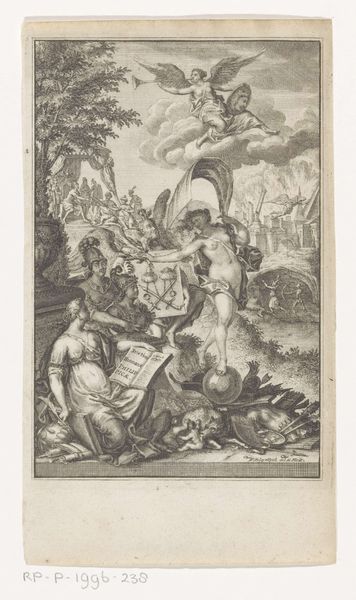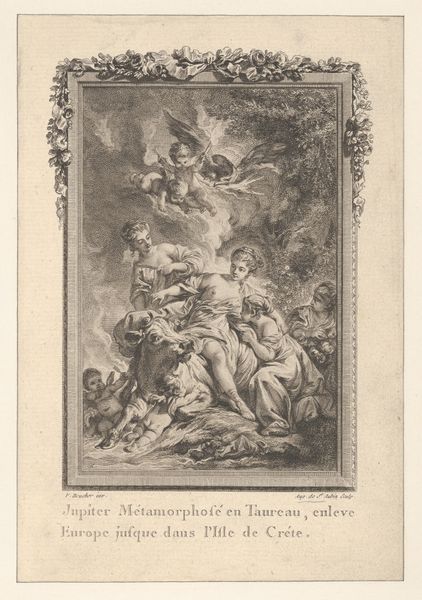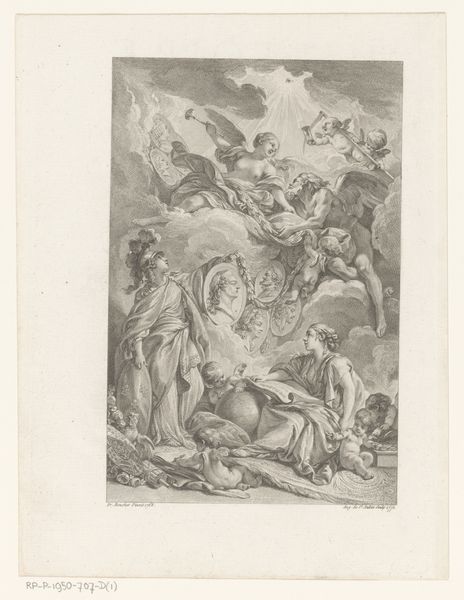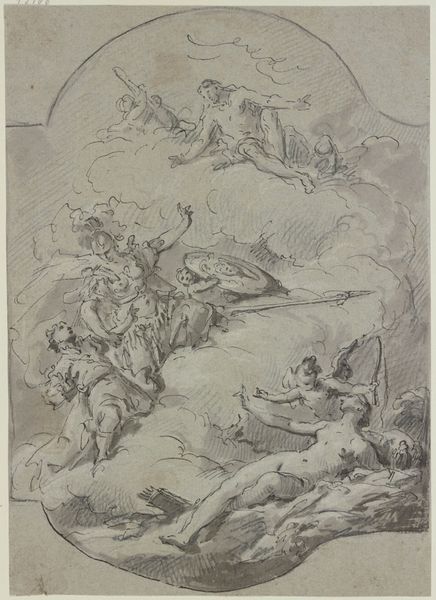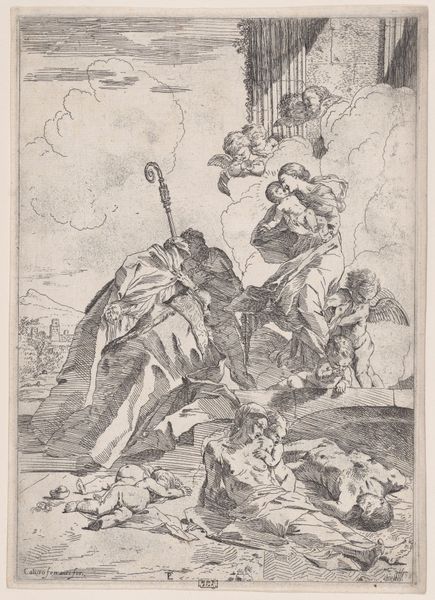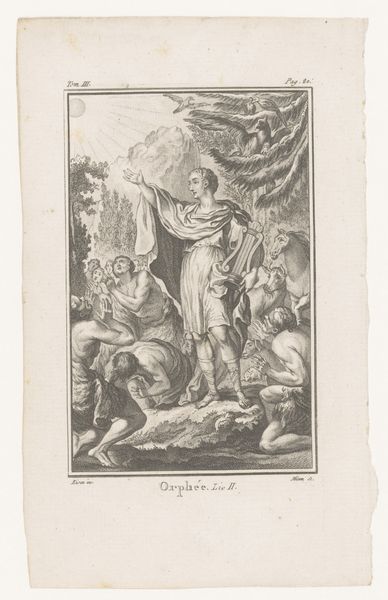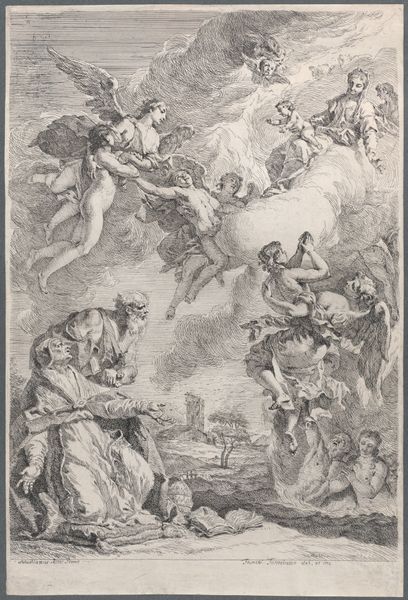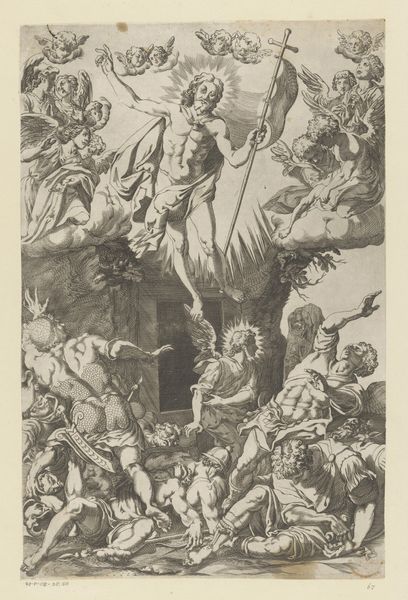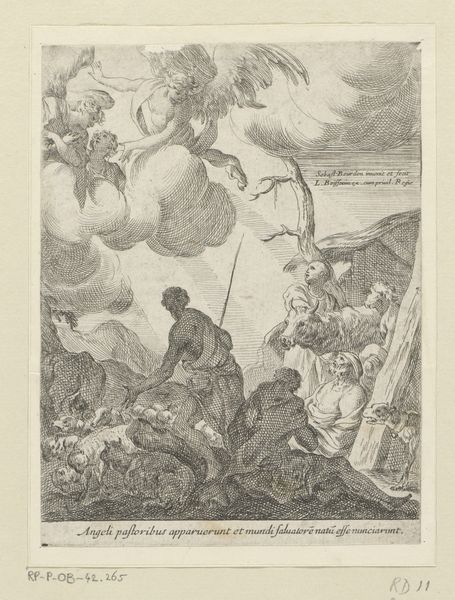
Calypso trying to detain Ulysses as a child prepares his armour at right and Mercury falls from the sky 1531 - 1576
0:00
0:00
drawing, print, etching, engraving
#
drawing
#
allegory
# print
#
etching
#
landscape
#
mannerism
#
figuration
#
female-nude
#
history-painting
#
engraving
#
male-nude
Dimensions: sheet: 15 11/16 x 11 7/16 in. (39.8 x 29 cm) plate: 11 7/8 x 8 9/16 in. (30.1 x 21.8 cm)
Copyright: Public Domain
Editor: Here we have Giulio Bonasone's engraving, "Calypso trying to detain Ulysses as a child prepares his armour at right and Mercury falls from the sky," created sometime between 1531 and 1576. It's packed with figures and detail, creating almost a frenetic energy. How do you interpret this work through a modern lens? Curator: This piece, steeped in Mannerist style, is much more than a mythological scene; it's a narrative about power dynamics. Calypso, a woman, attempts to control Ulysses, embodying a timeless struggle for agency. And look at Mercury, tumbling from the sky, disrupting the earthly power play. Bonasone compels us to consider the destabilizing influence of divine intervention. What statement do you believe the artist makes by showing the male figure’s vulnerability here? Editor: I see your point about the power dynamics! Ulysses does appear vulnerable, almost passively resisting Calypso's hold, despite Mercury's arrival. Does this depiction reflect societal views on male authority during that time? Curator: Absolutely. Consider the context: a period of strict social hierarchies where male dominance was fiercely upheld. Yet, Bonasone subtly undermines this ideal. By showing Ulysses in a moment of near submission, and placing focus on Calypso's agency and her almost violent attempt to dominate, he questions the stability of these power structures. It's almost a pre-feminist statement about disrupting patriarchal norms through a subversion of male virility. How does that change your reading of the piece? Editor: It completely flips my initial assumptions. I initially read it as a straightforward mythological scene, but your analysis unveils layers of commentary on gender and power, which are timeless, really. I am particularly struck by the destabilizing power of looking at the work through an intersectional feminist lens. Curator: Precisely. And by understanding its historical and social roots, we gain fresh insight into the nuances of identity and representation reflected across the arts today.
Comments
No comments
Be the first to comment and join the conversation on the ultimate creative platform.
